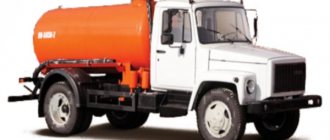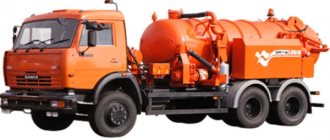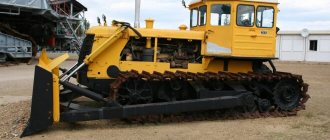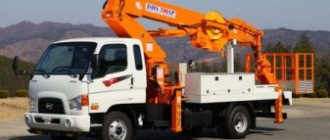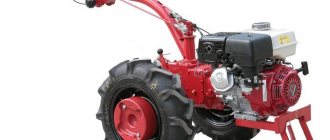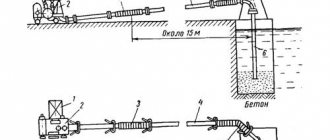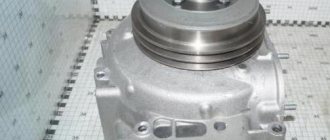November 20, 2015 Tips for an electrician kmposter
When we need to pump out liquid sewage or clean up the surrounding area, we turn to special equipment for help. The most common machines that restore order using vacuum equipment are vacuum cleaners and suction pumps.
Such equipment is in great demand in large cities, where volumes of liquid household waste accumulate in large quantities. Therefore, the removal of reinforced concrete is one of the top priorities in ensuring order and cleanliness in cities.
A sludge sucker is a complex but necessary technique!
I would like to note that such special equipment as sludge suckers play an important role; it is a complex, but really necessary equipment. As you know, it is usually used for thorough, effective and high-quality cleaning of wells, this includes storm water, sewer networks, etc.
Moreover, know that such a machine copes with its direct responsibilities easily, quickly and competently, which is important
As for managing the workflow, it is important to note that this happens using the control panel. If we consider the main advantages of sludge sucking machines, we cannot help but highlight the environmental friendliness, first of all, this is simple operation, and many other equally important advantages, so order the Volzhsky sludge pump
Features and advantages of sludge sucking machines
Few people know that such machines, as a rule, are actively used in the modern world by public utilities, as they allow high-quality cleaning of sewer and storm networks, this includes wells, etc.
If you compare this technique with vacuum machines, keep in mind that it differs not only in a more powerful vacuum pump, which actually allows you to thoroughly remove dense and heavy sludge. But also due to the presence of a lid, which is located on the back of the tank, it is necessary at the time of emptying the tank in those places where the waste is actually unloaded.
As for the special equipment for such machines, you need to know that it is customary to include a vacuum pump with a drive, a tank equipped with a suction boom, this or that additional equipment, etc.
It is important to know that today there are also models of sludge sucking machines that are equipped with special containers for clean water; they are naturally also relevant, popular and in demand
So, if there is a need to clean sewer or other structures, then you need to understand that such equipment will actually cope with such work effectively and very competently, hence its popularity.
To order a car, you need to seek help from the relevant organizations, after which you will personally be able to evaluate the advantages for which they are famous.
Operating principle of the sludge sucker
Pumping out sediments and contaminants, carried out using a suction pump, occurs in several stages. First of all, the equipment drives as close as possible to the place where this work is required. After that, a flexible hose is unwound, with the help of which dirt and deposits are sucked in, lowered, for example, into a well or cesspool, and the vacuum pump is turned on.
When the suction pump is operating, one of the compartments in the tank is filled with waste waste. As the sludge compartment fills, the water contained in the contaminants flows into the adjacent compartment, which is intended for sludge liquid. The operator can control its level. Excess water is removed through the drain pipe. The pumping process does not take long. Then, the sludge filled with sewage is sent to the unloading site.
Source
Price for suction pump services
| Pumping contaminated water locally | from 800 per m3 | Minimum volume 30 m3 12000 rub. |
| Machine flight (silt sucker) | from 1800 per m3 | Calculation of the cost of work depends on the volume, type of waste and distance from Moscow |
| Removal of drill cuttings | ||
| Removal of drill cuttings, bentonite | from 1700 per m3 | Minimum volume 7m3 |
| Car wash cleaning | ||
| Pumping sludge from car wash treatment facilities | from 2200 per m3 | Minimum volume 7 m3 12000 rub. |
| Watering machine rental | ||
| Rent of a 6m3 watering machine (7 hours + 1 hour supply) | 8500 rub/shift | The price includes a 6m3 water tank |
| Rent of watering machine 10m3 (7 hours + 1 hour supply) | 10500 rub/shift | The price includes a 10m3 water tank |
| Delivery of technical water to the site | From 1500 rub. per m3 | Minimum volume 6m3 |
| Delivery of hot technical water to the site | From 1900 rub. per m3 | Minimum volume 6m3 |
| Sewage services | ||
| Septic tank pumping | From 1950 rub. per m3 | Minimum volume 7m3 (hose length up to 60 m) |
| Removal of reinforced waste and sludge: | ||
| Pumping out contaminated water, removing concrete waste to a landfill | From 1300 rub. per m3 | Minimum volume 7 m3 12000 rub. |
| Pumping out sewage treatment plant waste (sludge) | From 2000 rub. per m3 | Minimum volume 7 m3 12000 rub. |
| Pumping out water: | ||
| Pumping contaminated water locally | From 800 rub. per m3 | Minimum volume 30 m3 12000 rub. |
| Pumping out contaminated water and transporting it to a landfill | From 1300 rub. per m3 | Minimum volume 7 m3 12000 rub. |
By placing an order for a suction pump with us, you make a choice in favor of services at an affordable cost. Cooperating with us is not only profitable, but also very convenient. In fact, your participation in the cleaning process is minimized.
You need to order a suction pump and wait for the prompt arrival of the team. Then all that remains is to assign the task to our specialists. After this, you can continue to do important things until our employees finish work.
Our emergency service offers sludge removal services in Moscow, which are provided at a high professional level. This is very easy to verify. Call our team and instruct us to clean up the silted object!
What is a sludge removal vehicle and what is it for?
There is a tank, there is a hose, there is a characteristic smell... But it is not so easy to determine what kind of equipment came to your site.
After all, it could be a sludge extractor, a sewer cleaner or a sewer washing machine. Let's take a look at a suction truck. Let's figure out what it is, what kind of technology it is, what it is needed for, how it is used, how it works, and what it is like.
Review of models on some types of chassis
Leading manufacturers of municipal equipment, in particular sludge suckers,
These are the following factories: Arzamas, Mtsensk, TverKommash, Tver. These enterprises have been specializing in this technology for many years, which has led to the improvement of the models produced. In parallel, the network of official dealers of these enterprises offers not only a large selection of suction pump models on various chassis, but also further service and support with the necessary spare parts.
Built by Mtsensky on the chassis of a MAZ 6312v3 car, which has three axles, of which two are driving (middle and rear).
Features of the model. The overall dimensions of the frame and the ability to distribute the load along the axles made it possible to place a tank for collecting sludge with increased capacity. The vehicle has a boom that rotates 270° and can be raised and lowered by 55 and 15° respectively. The machine can load dense sludge (up to 1400 kg/m3) by washing away sediments with water pressure. The sludge-suction equipment of this model is equipped (optionally) with an imported vacuum pump; installation of a stainless steel tank is allowed. Unloading is carried out using a dump truck using hydraulic churning.
Sludge cleaner KO-507 based on KamAZ
The KO 507 machine is a special municipal equipment that is used to carry out cleaning work. It is used in sewer systems, storm drains and drains. A special mechanical device allows you to remove sludge, sludge water and fatty deposits from wells and cesspools. In addition to pumping out contaminants, the KAMAZ-based vehicle is designed to transport the collected mass for the purpose of its subsequent disposal. The sludge pump based on KamAZ KO 507 has the following features:
The collected sludge and fat deposits are unloaded automatically by tilting the entire tank body back.
Photo of the KO-507 suction pump based on KamAZ
Stages and principles of operation of the suction pump
Powerful equipment has significant dimensions, and therefore requires preparation of access roads to the reservoir. The installation action then occurs in the following order:
- A suction-pressure hose is installed.
- A vacuum pump is activated to fill the containers with contaminated liquid.
- Water is purified by flowing from one compartment to another, where silt is separated and solid masses of dirt are retained.
- The filled suction pump is sent to the waste disposal site for subsequent unloading.
Some models of equipment have special pistons that allow you to speed up the cleaning process and empty filled tanks faster. On average, the procedure takes 30-50 minutes, provided that one visit to the site is enough. To efficiently remove sewage, considerable experience and appropriate permits for work and disposal are required, so you should contact professionals who will carry out the sanitization in full compliance with the requirements and will not harm structures or the surrounding environment.
How does a vacuum suction machine work?
Its design includes a powerful vacuum pump that sucks waste into a tank, in which it is then transported for unloading to a treatment facility.
This tank is made of steel, the minimum thickness of its wall is 6 millimeters. The internal space in it is divided into two parts - a compartment for water and a compartment for sludge. The inner surface of the tank is coated with a zinc-containing polymer that protects against rust.
The suction pump kit also includes:
All this equipment is based on a vehicle designed to transport sewage to the pumping point and transport waste in liquid form to the disposal point.
Sludge sucking machines
A fairly common job of utility workers is to clean communications, stormwater and drainage systems from silt and other similar contaminants. Of course, this is done through the use of special equipment. The equipment that ensures the implementation of cleaning work is sludge sucking machines. These machines clean sewers and other waste systems by pumping out sludge masses and separating them from water.
Operation of the sludge sucker
After cleaning work, the sludge sucker removes sewage to the places where it is released. That is, this technique is not only a pumper of contaminants, but also a transporter. The standard equipment of a sludge sucker includes such elements as: a container for collecting sludge, a pump that operates by a drive and has a vacuum operating principle, and a boom that directly sucks up contaminants. Additional tanks, which serve as containers for water, through which sludge is churned, are also included in the package of sludge sucking machines.
As a rule, the equipment of the sludge suction machine itself is designed on the chassis of well-known Russian brands such as Kamaz, ZIL, etc.
Contaminant collection tanks can vary in volume, depending on the intended purpose of the machine and the objects it serves. Pumps also differ in their power, since in some places high pump pressure can have a detrimental effect on the pipe itself, so it is more advisable to use rather weak devices there. The sludge suction equipment itself can be placed on the chassis in different ways.
Sludge sucker equipment
For example, there is an open form of suction pumps, when the equipment is simply attached to the chassis, without an additional canopy. Or it could be the so-called “seasonal” option, when the sludge-suction equipment is mounted in a special body, thus making it more protected from external influences. This sludge sucker is capable of operating even at very low temperatures, since the van itself is equipped with special thermostats.
Unloading tanks from sewage can be carried out in two ways, depending on the model and modification of the machine. For example, unloading can be carried out through the operation of a mechanism that looks like a lever. When this mechanism is started, a special piston pushes sewage out of the tank; this process begins the moment the container lid opens.
Another method of unloading the suction pump is the dump unloading method. With this type of unloading, due to the hydraulic system, sewage is washed away with high water pressure.
To carry out these works, the sludge sucking machines include washing equipment with a powerful pump for supplying water, a container with sediment operating under high pressure and a gun for breaking up adhered sludge. Due to the operation of the manipulator, which has a rotating mechanism, the machine can achieve high productivity. The sewage suction hose is located depending on the type of suction machine.
If it is a rotary manipulator, then the hose is located in a special cassette, which is built into the tank; if it is a drum-type sludge pump, then the hose is located between the cabin and the tank. Special safety valves are installed on the pumping equipment of this equipment, which close as the tank is filled with sewage. Today, all equipment for this purpose is modified and meets all state standards. The choice of a specific model depends on the purpose and nature of the work performed. Sludge suckers are the so-called cleaners of municipal systems.
What is the difference
Sewage equipment is designed for pumping out sewage that is in a liquid state. This system is a barrel equipped with a vacuum pump and a corrugated hose.
This equipment is usually installed on a truck. Liquid sewage is pumped into a container using a pump and transported to special facilities for neutralization.
The sludge extractor looks like a sewer machine, but has some differences in equipment. The tank of such equipment is equipped with a special gun, which ensures the washout of viscous sewage.
The liquefied dirt is collected using a pump using a suction boom, which is equipped with a remote control system. The waste stored in the container is dumped in specially designated areas using the dump method, and in some designs an extrusion plate is provided.
The main difference between a sludge pump and a sewage disposal equipment is that it can be used to collect solid waste that has been previously washed away. This technique is universal and can be used for various cleaning jobs.
Operating principle and device
To build sewage disposal machines, a chassis is used, equipped with a transfer gearbox on the gearbox. A similar design is used on garbage trucks. The equipment is equipped with a control panel in the cab and a number of additional elements. The machine is serviced by the driver and operator. The driver's responsibilities include operating the truck and the waste injection and discharge systems. The operator works with the hose and assists the driver in cleaning the tank.
To transport waste, 1 tank is used; there are modifications with 2 containers installed in parallel. The containers are connected to each other by a special jumper with a channel diameter of 65 mm. To control and configure the operation of additional equipment, there is an instrument panel. The level of excess pressure or degree of vacuum is measured using a pointer-type pressure vacuum meter. The device is also used when adjusting the safety valve.
The tanks are installed on the truck frame through intermediate supports that provide an inclination towards the drain. The supports are fixed to the side members using stepladders, and the containers themselves are secured with bandages. The tanks have a cylindrical configuration, with spherical bottoms installed at the ends. Partitions are installed inside to dampen fluid vibrations. Additionally, the structure is reinforced with stiffening ribs made from steel profiles. To drain sewage, there are hatches in the rear covers.
On the tank body there is a sensor installation point that ensures the operation of the alarm device. Additionally, a safety valve is installed that limits the pressure during the draining process.
The sewage disposal equipment includes a vacuum pump installed on a separate small-sized frame in the space between the cabin and the tank. The pump is an eccentric rotor mounted on rolling bearings. All parts are installed in a cast iron body equipped with inlet and outlet pipes.
The pump is driven by a power take-off gearbox mounted on the gearbox housing. Torque is transmitted by a V-belt transmission or a cardan shaft; the type of drive depends on the modification of the KamAZ vacuum machine. The pump control is located in the truck cab on a separate panel. The pump is equipped with a separate oil reservoir to lubricate the bearings and rotor.
The suction hose is placed around the tank in a special case. Some KamAZ-based sewer trucks are equipped with a pneumatic drive mechanism for unloading and loading the pipeline. The connection points between the hose and the tank are equipped with a connecting mechanism that prevents the spillage of sewage. At the entrance to the container there is a receiving chamber equipped with a pneumatically controlled valve. The source of compressed air is the brake drive system of the base chassis.
Sequence of actions when filling the tank:
- Turn on the work area illumination (at night). Set the engine speed and activate the power take-off gearbox.
- Open the special tap and lower the hose into the container with sewage.
- Close the tap channel. Move the regulator handle to the suction position.
- Turn the switch to ensure connection between the sleeve cavity and the receiving chamber.
- Wait for the pressure inside the tanks to drop and open the valve connecting the receiving chamber to the internal volume.
- After filling the containers, the receiving valve is automatically locked and the red control indicator turns on.
- Turn off the power take-off, lay the hose and close the taps.
To drain, you need to open the channels using the switch. In this case, the sewage will go away by itself. An accelerated procedure is possible, with the pump providing excess pressure in the tanks.
Sludge pump or vacuum cleaner – how should utilities make the right choice?
In principle, it is advisable for any public utility to have both types of municipal equipment in its fleet:
- Vacuum sewer machines are equipped with a special vacuum pump, which pumps household waste without explosive and flammable components from filled cesspools and clogged sewers through a suction hose. We are talking about liquid household waste. A vacuum-sewage machine can not only pump out waste and wastewater from cesspools, sedimentation tanks, wells, pits, basements; such sewer trucks can clean yard toilets, pump out septic tanks into which sewage flows from sewer pipes in houses.
- Unlike a vacuum cleaner, a sludge extractor is capable of working with sewage that contains a lot of silt deposits. If in a vacuum-sewage machine liquid waste goes directly into the collection tank through a suction hose, then the suction pump also has a special hose with strong water pressure, which washes away the sludge in the liquid waste. It is the silt pump that is needed if the cesspool or septic tank has not been cleaned for a long time and is heavily silted.
How is pumping done with a suction pump?
Sludge pumping is carried out in several stages. First, the machine drives up to the work site, the flexible pressure-suction hose is unwound, and the vacuum pump is turned on. Using the vacuum created by it, the tank is filled with wastewater and sludge. Next, the sludge sucker travels to the waste disposal site. This is how pumping is done with a suction pump; this process takes an average of 20-40 minutes (filling a 3.25 m3 tank).
Also, during work, a sludge sucker can separate sludge from sludge water, which can be supplied back under pressure to wash out the compacted solid sediment.
In addition to pumping out sludge, a sludge sucker can perform tasks such as pumping out petroleum products and oils, draining reservoirs, ditches, etc. Sludge pumping has become widespread not only in the utility industry, but also in other areas. For example, a sludge pump is indispensable when servicing car washes (pumping with a sludge pump is necessary to empty the storage tanks of compacted sand).
A sludge sucker is expensive to purchase and maintain. Therefore, those who need pumping with a suction pump do not have to purchase such complex equipment. Now in large cities there are a sufficient number of organizations that provide the service of “sludge pumping”. The sludge sucking machine of such organizations is often presented in various modifications and designs (vacuum pump capacity, tank volume).
Depending on the customer’s needs, the sludge sucker can be ordered according to two schemes. In the first, the equipment arrives at the site, completes the volume specified in the application and leaves. The second scheme implies that the sludge sucker is ordered for the entire work shift.
The market for sewage disposal services today is saturated and every day there are a growing number of organizations that are ready to offer you the service “pumping with a sludge pump.”
When choosing a provider of the “sludge pumping” service, we advise you to engage an organization that has considerable experience in this field and a good, serviceable fleet of vehicles. And then there are cases when a sludge sucker arrives at a site and cannot cope with its task (because it is outdated or faulty).
I would also like to highlight the issue of the legality of recycling pumped sludge. Once the sludge pumping is completed and the sludge is disposed of, the contractor must provide you with the relevant documents. This confirms that the sludge sucker reached the drainage point and disposed of all the sludge.
To summarize, we note that a sludge sucker is a necessary type of municipal equipment, both in the city and in suburban settlements. Sludge pumping should be carried out by a reliable company with considerable experience.
Popular suction pump models
On the Russian market, domestically produced models are most in demand. Power, spaciousness, affordable price and excellent maneuverability make them indispensable when working both within the city and in rural areas and at remote sites:
- KO 507AM is ideal for cleaning clogged pipes and utility networks, including removing grease-containing sediments. It is installed on a KamAZ base, holds up to 7 m3 of waste, and collection is possible from a depth of up to 6 m.
- KO 510 is a machine with a compact tank of 3.25 m3. Mounted on a ZIL chassis, the sludge extractor does an excellent job of cleaning wells and sewer systems. Cleaning depth is up to 4.5 m. Equipped with tanks for water (20 l) generated during waste collection.
- KO-530 is a powerful and capacious sludge pump based on KamAZ with a tank of 9.7 m3. It can be equipped with additional tanks, hoses and extensions, which allows you to work at greater depths. One of the most productive sludge sucking machines today.
- KO 560 with a volume of 6000 l belongs to the combined machines. In the basic version, they are equipped with sludge sucking and sewer cleaning equipment. They are notable for the fact that you can additionally install a blade and a watering system, after which the sludge suckers can be used as snow blowers, sprinklers and even fire engines. Installed on KamAZ chassis.
Be sure to read: Dump truck ZIL 555: load capacity and other characteristics
Specifications
As an example, let’s look at the technical characteristics of the KO 510 sludge extractor. This is one of the most popular machines, which can be easily recognized in the photo by its ZIL chassis.
Dimensions:
- length - 7000 mm;
- width - 2500 mm;
- height - 3100 mm.
Total weight - 11000 kg. The base chassis is ZIL-432932. Pumping depth - 4.5 m. Tank volume - 3.25 m3. The productivity of the vacuum pump is 360 m3/h. The maximum vacuum in the tank is 0.085 MPa. Tank filling time - 3-6 minutes
Municipal equipment: sludge suckers
Machines for cleaning storm drains from sludge, their technical capabilities and features.
The maintenance of city communications that provide storm drains is associated with the periodic cleaning of sewage wells and collectors from the resulting sludge. Its appearance in storm drain networks is inevitable, since this mixture of road dust and various insoluble particles with rainfall is constantly formed and, due to its gravity, is deposited on the walls of pipelines and in the pockets of wells. This pulp can only be removed with the help of a special sludge sucking machine, which allows you to extract sludge deposits from the most inaccessible places in stormwater networks.
How is a suction pump different from a vacuum cleaner?
Sludge pump is an advanced, expensive technique that is widely used in municipal services to solve complex problems. Stages of operation of sludge sucking machines:
- The equipment arrives at its destination.
- If it is necessary to pump out compacted solid and viscous sewage, the operator first washes it away with a special gun, the presence of which is an important difference between a sludge extractor and a vacuum cleaner.
- Using a vacuum pump, wastewater flows through a flexible hose into the tank. The container is divided into 2 compartments.
- Sewage enters the first compartment. The liquid part flows into the second compartment.
- During transportation, wastewater is separated into liquid and solid parts and separated into different compartments. The liquid flows into the front section, while dirt, silt and other dense and viscous components remain in the rear section.
- This type of equipment is designed for pumping out dense viscous waste, therefore it provides for unloading waste using a dump truck. The machine is equipped with hydraulics for lifting a container with an opening lid.
The parameters of the sludge sucker – pumping depth and productivity – are approximately 2 times higher than those of a vacuum cleaner with a similar base. What else is the difference between a suction pump and a vacuum cleaner:
- The presence of a suction boom on the sludge sucking machine. It allows you to direct the suction hose towards the pit, septic tank, or well from which it is to be pumped out.
- Additional equipment - control panel, automatic hose supply, high-pressure washing devices (in combined sewer washing machines).
- Automated system for cleaning the container after unloading waste.
The sludge extractor can perform the entire range of work that a vacuum cleaner performs. However, using expensive sludge pumping equipment to simply pump out liquid waste from a shallow depth is not economically profitable. In such situations, a vacuum cleaner is more cost-effective. Another limitation on the use of a suction pump is its large dimensions. Sludge sucking equipment is mainly used on an industrial scale, in conditions in which its large size is not a hindrance.
How does a sludge sucker work?
The suction pump contains:
- high pressure vacuum and plunger pump for pumping out waste;
- a suction hose (boom) that allows waste to be collected from depth;
- gun for washing away silt and viscous sediments;
- tank for collection and removal of waste; can also be used for recycling and temporary
- storage of sludge deposits;
- additional equipment (hoses, extension cords, water tanks).
The principle of operation of the suction pump is simple - with the help of a vacuum pump, waste enters the suction hose and then into the storage tank (cistern). As the waste separates, water is formed in the tank, which enters a special compartment where it settles and clarifies. To increase the capacity of the tank, excess water is drained through a special pipe. This water is not dangerous and can be used to water garden plants or be drained into a ditch, pond, or forest area.
If you watch a video of how the sludge pump works, you can see that one person is enough to control the process (usually the driver). The machine drives as close as possible to the pumping site, then the suction hose unwinds and lowers into the container to be pumped. After this, just press the start button of the vacuum pump and monitor the filling level of the tank, draining the water in time.
Usually the whole process takes about 30 minutes, of which pumping takes from 3 to 7 minutes.
Waste is transported to special sites (sludge dumps or landfills). On sludge pads, waste is dried and disposed of or sent for processing (fertilizers are made from it). Waste is evacuated through the rear hinged lid of the tank. Some models are equipped with hydraulic devices to push waste out, but more often the discharge occurs under the influence of gravity.
Some numbers:
- The average pumping depth is up to 30 m.
- The volume of the tank is about 3 m3.
- The average hose length is 50-60 m.
- The average hose diameter is 100 mm.
Difference from a sewer truck
People unfamiliar with the process of collecting waste on a professional level often ask the question of how a sludge extractor differs from a vacuum cleaner. These machines are indeed very similar in design and differ only in that the suction pumps are additionally equipped with a gun for washing away viscous deposits. This allows you to effectively clean sedimentation tanks, ponds and wells, while sewage disposal technology is only suitable for septic tanks and cesspools, where the waste has a lower density and a more uniform consistency.
Content
- How does a sewer truck work?
- How is a suction pump different from a vacuum cleaner?
The problems of cleaning autonomous sewer systems, removing waste from enterprises, and pumping out grease and starch traps at catering outlets can only be solved with the help of specialized equipment - vacuum trucks and suction pumps. There are many more situations in which it is simply impossible to do without them. In some cases, it is more effective to use a sewage disposal (vacuum) machine, and in others, a sludge sucker. Therefore, it is possible to answer the question of which is better, a sludge extractor or a vacuum cleaner, only after determining the nature of the planned work.
